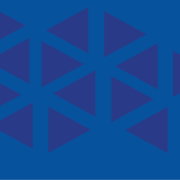AI Reshapes the Workforce
Organizations use AI to recruit, retain talent
By Hannah Flanders
When asked if artificial intelligence (AI) would replace the workforce, experts agreed that most jobs require a human connection. However, some economists assert that automation by platforms like ChatGPT — an AI program with capabilities to understand and generate human-like text — may lead to displacement in some areas.
Although human resources and talent acquisition-related positions continue to be among the fastest growing user role on LinkedIn, according to World Economic Forum’s 2023 ‘Future of Jobs’ report, many agree that AI will only augment the abilities of human professionals, rather than replace them entirely.
“If the staff are not robots, the process shouldn’t be either,” says Renée Peterson, vice president – talent acquisition and development manager at Horicon Bank. “Being a community bank, it is important that we don’t lose the community feel.”
While the World Economic Forum predicts that AI will help create nearly 70 million jobs in the next five years, another 83 million are expected to be eliminated. Human resources professionals and bankers in Wisconsin, however, should not let this staggering number deter them from embracing AI’s potential.
Oliver Buechse, owner of Advancing Digital, explains that incorporating AI into an organization allows employers to empower their team. “AI allows individuals to do. By providing the opportunity for those that are interested to explore AI and its capabilities in their job function, employers will not only be fostering a culture of innovation but also assisting their organization in remaining ahead of a world increasingly reliant on technology.”
Recruiting, Retaining Talent
According to the Society of Human Resource Management (SHRM), it takes, on average, 36 days to fill an open position. During this time, HR professionals are occupied preparing a recruitment plan; sourcing, screening, and selecting candidates; making offers; and onboarding.
While AI cannot completely automate the recruiting process, some experts say that it may help streamline processes.
“AI is great at processing and analyzing massive amounts of data,” highlights Beth Ziesenis, a popular speaker known professionally as ‘Beth Z, Your Nerdy Best Friend.’ “By using generative AI (such as ChatGPT), hiring managers have the ability to analyze what people are looking for and consider feedback from current and former employees to develop a job description that may better communicate the benefits and responsibilities.”
Experts noted that HR professionals may also utilize AI to quickly screen public social media profiles, brainstorm relevant interview questions, and even personalize regret letters.
“In addition to saving time that would otherwise be spent researching or writing, HR teams will greatly benefit from the perspective AI can provide during the recruiting process,” Peterson emphasized.
Despite the large amount of data AI has the ability to process, Horicon Bank’s Senior Vice President – Chief Information Officer Cyrene Wilke states that staff needs to ensure that they are correctly leveraging the tools available to them.
“AI has existed in some capacity for many years, but its abilities only continue to expand,” says Wilke. “While AI at this current moment may allow us to identify top candidates for the position, it is important to recognize that not every qualified candidate makes their information public on LinkedIn or other social media and that sometimes, trained AI bias may still disqualify candidates with differing experience. For this reason, it is important that AI doesn’t entirely replace your staff — just helps enhance their abilities.”
In addition to helping HR professionals recruit for open positions, AI may also be beneficial in assisting and analyzing current employee retention efforts.
During the onboarding process, employers may utilize AI to automate training programs efficiently and inexpensively. As well as tracking employee progress, automating certain aspects of the onboarding process may help provide a more comprehensive training environment for individuals with varying skills or learning styles. Day to day, AI may also prove a powerful tool in assisting employees to understand how their role impacts the organization as a whole or to uncover new career paths within the organization.
“Companies that embrace the transparency AI provides will find a greater sense of belonging among their team members,” notes Buechse.
“With the ability to make predictions based on trends and patterns, AI can provide new perspectives,” says Wilke. “Of course, trained professionals would notice an unengaged employee through details such as excessive and unplanned paid time off. AI, however, would augment and complement the work HR professionals already do to help assist in recognizing trends or insights that are not always apparent at a surface level.”
As such, companies have begun deploying AI to assist in the process of gathering feedback from current and departing employees. Programs such as CultureAmp utilize AI to track employee engagement, measure employee satisfaction and company culture, as well as gather insight into the employee lifecycle. While many organizations already routinely connect with their employees for feedback and provide exit surveys to those leaving the organization, AI provides managers with a systematic and detailed analysis of employee sentiment.
“By taking the time to collect comments from team members, and understand what this feedback signifies, employers will stand apart in a huge way,” emphasizes Wilke. “AI has the potential to not just enhance the efficiency of multiple processes, but also aid in comprehending the employee experience and implementing necessary adaptations.”
Embracing Change
According to research by the Pew Research Center, 45% of Americans are equally concerned and excited about the growing use of AI.
“In order to curb the discomfort some may feel towards AI, it is critical that organizations have a written policy related to its use in human resources, and generally,” says Ziesenis. “Whether your team is waiting for more information or using it all the time — now’s the time to define your bank’s approach and protocol.”
Buechse agreed, “The U.K. has already released information related to its approach to harness the powers of artificial intelligence. In order to remain a step ahead, bankers should familiarize themselves with regulatory frameworks that are beginning to be published around the world. While regulation in the U.S. hasn’t quite caught up yet, that doesn’t mean it isn’t coming.”
As of this writing, bipartisan legislators have introduced a bill aimed at establishing an artificial intelligence commission to review, recommend, and develop frameworks for AI in the U.S. However, for those in the banking industry, it is important to consider the utilization of disclaimers, programs that have been tested for safety and effectiveness, as well as what protections are necessary to ensure privacy prior to launching new systems.
Given the ongoing expansion of AI throughout our lives, experts underscore the need to reframe how technology will amplify the abilities of humans.
“While AI may automate certain aspects of the profession, human resource teams may find that they have a greater ability to focus their energy and efforts on the most impactful aspects of the hiring and retention processes,” says Peterson. “AI will ultimately allow us to spend more time on fine-tuning the outcome.”








